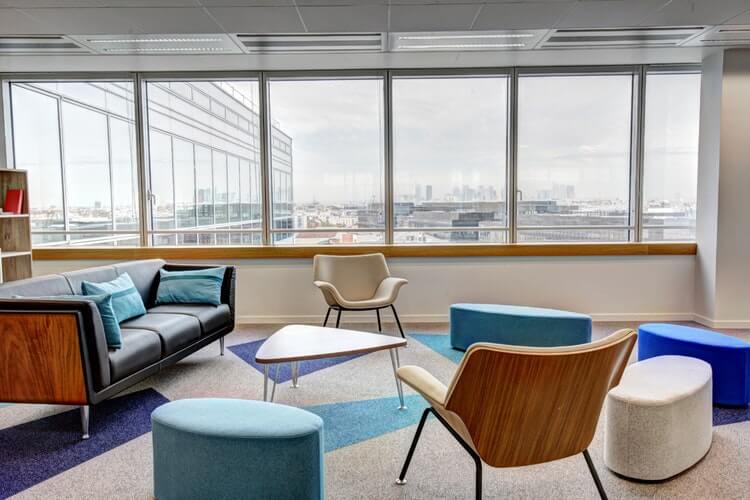FlexCareers CEO Natalie Goldman tells us what it takes to create a successful flexible workplace and some of the biggest misconceptions about this way of working.
There are plenty of people who just don’t “get” flexible working. Despite becoming an increasingly common way of working, especially in recent years, many people and organizations still struggle to understand its benefits and how it entails so much more than just choosing random days of the week to come into the office.
Natalie Goldman is the CEO of FlexCareers, a careers platform specializing in supporting candidates seeking workplace flexibility, and she has seen how these misconceptions can create critical organizational issues. She shares some of the most important things to keep in mind when implementing a flexible working strategy and how it is driving workplace diversity.
The initial focus of FlexCareers was to give women a platform that would connect them to employers that offered flexible careers. Why do you think that was so important to address?
Goldman: In Australia, there’s a population of just under 25 million and of that there are 3.3 million women aged between 25-45 that are underemployed due to taking parental leave. They are struggling to return to work or have gainful employment due to the lack of flexibility.
Women are still primary carers globally and with that there’s the question of “how do you advance your career?” While things are starting to change, most heterosexual relationships are still not equal in caring responsibilities, it’s often been the domain of women. Women are often challenged by how to manage working and caring for kids or aging parents. These roles are stereotypes that men and women have been boxed into and are very limiting for both genders. Men also miss out on amazing time with their families and other life moments as well, so these stereotypes aren’t working for anyone and need to be broken down.
FlexCareers was based on the premise of giving women a platform to connect them to employers with flexible careers because they were struggling to get back into the workforce. We’re talking about senior-level women with amazing degrees, backgrounds and experience, but there is what is called the “pregnancy penalty.” This basically puts women at a disadvantage when they automatically lose their brains when they have babies — maybe you can sense my sarcasm here. The reality, of course, is that is so far from the truth.
The focus going forward is about uncoupling gender from flexibility. More and more people would like flexible work, not just women with children. That includes men who are parents, people without caring needs, baby boomers who would like to dial down their careers and millenials who want to work in a more human way. In fact, what we are seeing aspirationally are organizations wanting to offer flexibility to all and not needing a reason from the employee.

Do you think this inequality has to do with unconscious bias in the workplace?
Goldman: Unconscious bias isn’t going anywhere, it’s part of our human makeup. However, it has also been programmed through years of stereotypes and lessons about “what it means to be a man and a woman.” When we think of a workplace leader, it’s often a white middle-aged man. When people see a female leader, they might say “well that doesn’t fit into my mold.”
Sometimes there’s alike bias. This means when you’re hiring people, for example, you look at people’s teams and they are often similar to the manager. Whether that’s gender, culture, ethnicity or age, people want to work with people who they are like. This is why more selection and recruitment panels tend to now have 50/50 representation of men and women with different ages and cultural backgrounds to ensure that they’re not just letting one person decide who to hire.
The more diverse the team, the better it will function. Unconscious bias often stops that because you tend to go with what you know. You preclude people who are completely capable of the work based on built-in prejudice towards certain groups. That’s where unconscious bias becomes dangerous because we’re not using rational thought, we’re using our biases to define these paradigms.

Have you noticed which type of workplaces or countries are ahead or behind the game on flexible working and gender equality?
Goldman: Let’s look at America, Canada, the UK, Australia and New Zealand. When you look at the World Economic Forum report around gender equality — it ranks all the countries in the world.
New Zealand is doing awesome. They’re in the top 10 and beating all other western countries. What’s working so well there is that they have a very inclusive work culture, it’s not just gender-based, but cultural as well with the Maori culture very much included. Canada is also very close behind. From an inclusive and diversity perspective, those are the countries that are doing really well.
That flows into flexible working practices because it’s a more human way of working. I would say Australia is probably the most behind out of the five and I would said the UK is leading the way in some respects. They have a lot of job-sharing and have been doing a lot of flexibility for a number of years. Having said that, America has a very high remote working culture due to the size and geographic dispersion of the country. Large multinational companies having multiple offices and people traveling constantly with teleconferencing and video conferencing enabling people to work from almost anywhere. In that sense, America is doing incredibly well.
Australia is ironically an incredibly conservative country in many respects and is really only starting to pick up its game on all those things. I’m often looking at America, the UK, Canada and New Zealand as to what’s worked and what hasn’t. The bonus of not doing so well is the fact that we can learn from the mistakes of other countries rather than repeating them. Interestingly, what’s happening in Australia is that it’s changing very quickly. You’re literally watching the landscape in the last 18 months to 2 years change and organizations are scrambling to keep up, which is good because we’re catching up.

Do you see employers struggling to understand the benefits of flexible working? If so, why do you think that is?
Goldman: The reason a lot of organizations and individuals within these organizations don’t understand the benefits comes from a couple elements. For one, they don’t actually understand what flexibility is. The paradigm of it being only for working moms who are part-time is very pervasive. It’s about busting those myths.
Secondly, there’s a lot of fear. What we’re seeing is a real shift in leadership that has moved away from sitting in front of your manager and being seen doing your job to a more collaborative trust-based style because technology is enabling so many people to work more flexibly. Workplaces are changing with agile working, multiple locations and just the nature of work as a whole. You’re challenging the very base of how organizations function. That goes right to the core of change which can cause fear and resistance.

Can you share some key recommendations you have for improving stagnant workplaces that could benefit from flexible working?
Goldman: Flexible working is often talked about as a future way of working. What we need to recognize is that it’s already happening today. In order for organizations to have a competitive advantage, particularly in the attraction and retention of really good employees, you need to recognize that those people are the ones pushing the shift. It’s the candidates who are asking “what is your organization’s flexibility like?” because they’re interviewing with a competitor that is offering a more flexible style.
When you look at engagement drivers, there’s always four key drivers that organizations get reported on and 10 years ago the most important were professional development, salary, security, those kinds of things. Today, flexibility is always in the top 4 no matter what the engagement survey is.
People have been moving towards flexible working formally or informally for years now and good companies are missing out on great people because of their lack of willingness to recognize how important it is and how impactful it can be in the workplace. Those organizations that are going to pop their head in the sand will miss out on great talent that will impact so many elements around profitability, engagement and their overall standing.
I would say to an organization: consider where you are compared to your competitors. What are they doing in the world of flexibility? How are you attracting people? Are you retaining good people? What are your exit surveys saying?
If you want to give it a go, don’t feel like you need to let go of the reins completely and now suddenly your entire organization is flex and away you go. Trial things, test things, come at it from having a clear business case. What problems are you solving? How can flexibility actually help your organization? I would strongly encourage any organization not to suddenly implement flexible working, there’s a lot of implications and ramifications. You need to train your managers and look at your systems and technology. It’s a slow and transformative change, but in order for you to do it well — you have to know why you’re doing it in the first place.
Find out more about how FlexCareers can help connect flexible employers with great candidates at their website.
How do you think flexible working is impacting the overall employee experience? Join the conversation and leave us a comment below.
Photos: Philippe Birmes, Marvin Meyer, Thought Catalog, Yann Maignan





